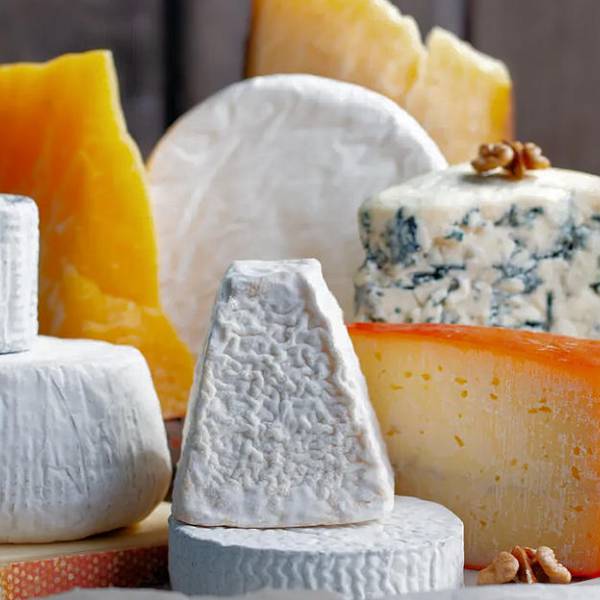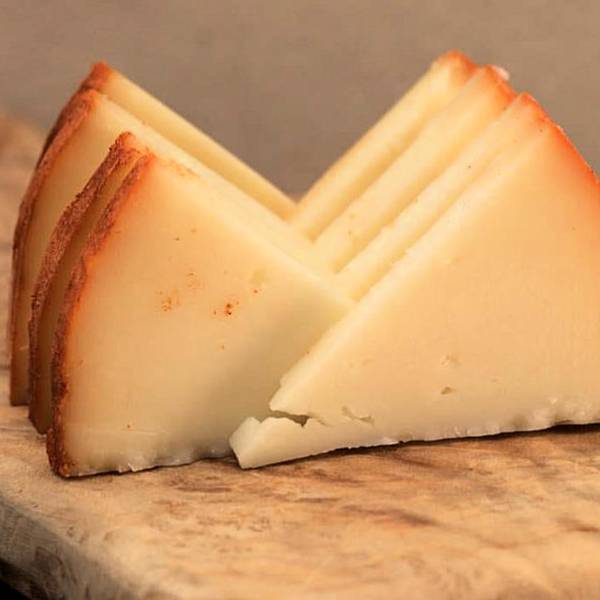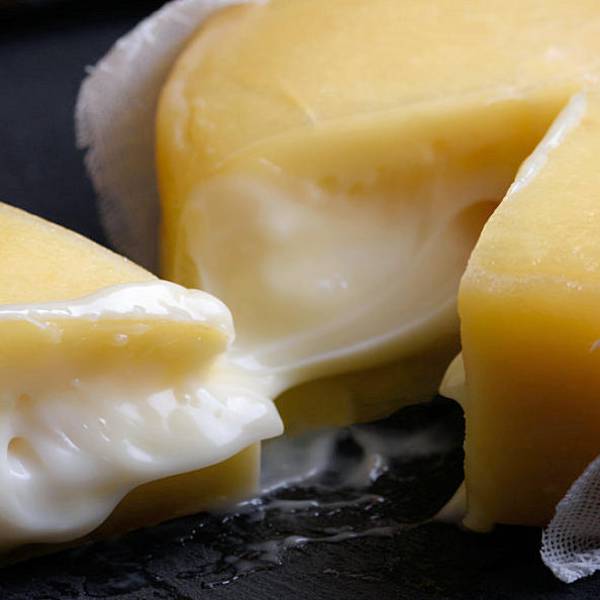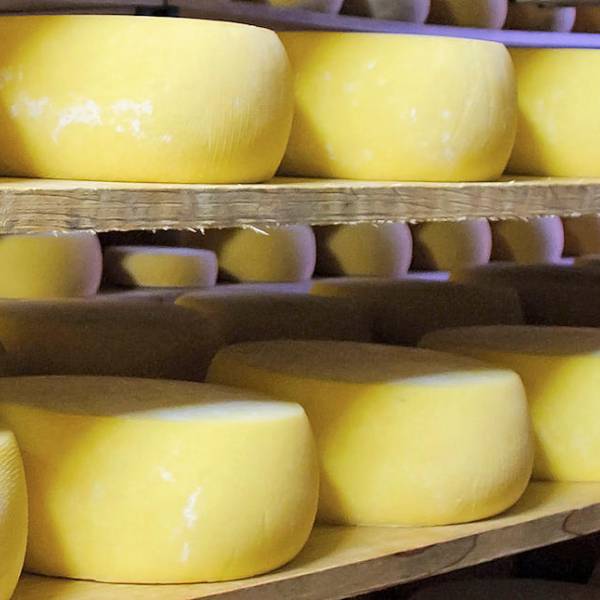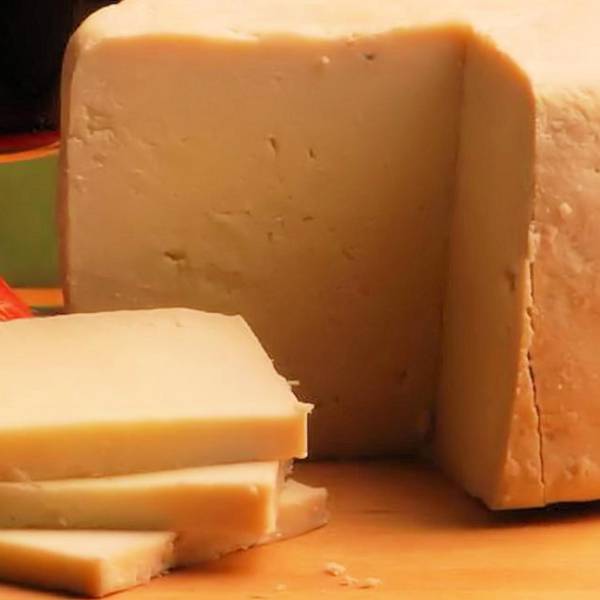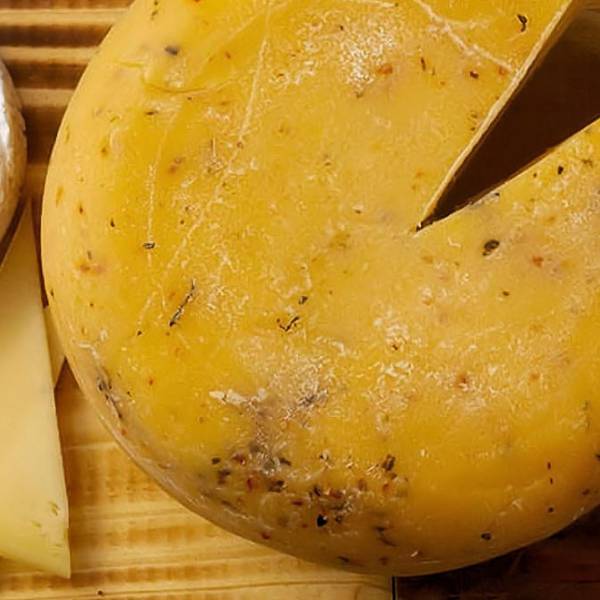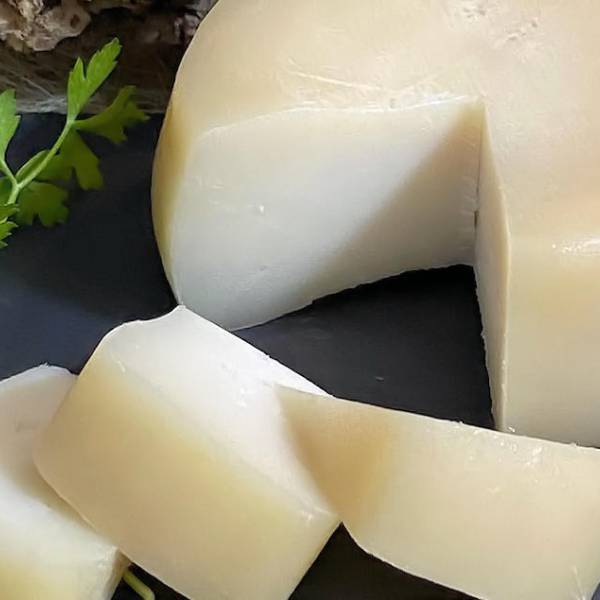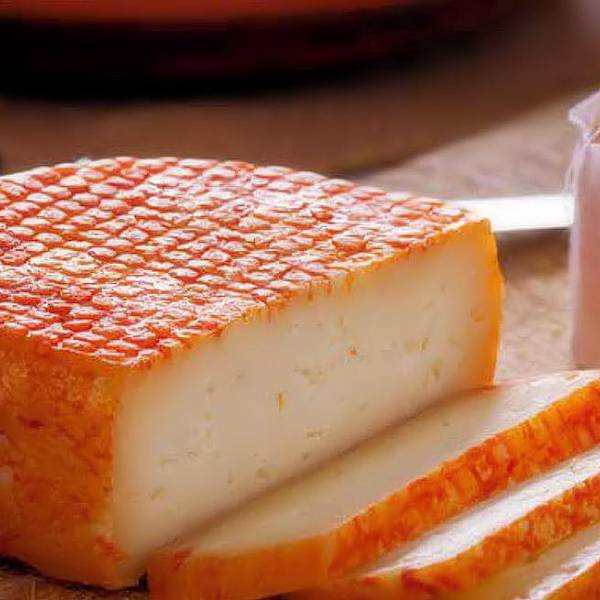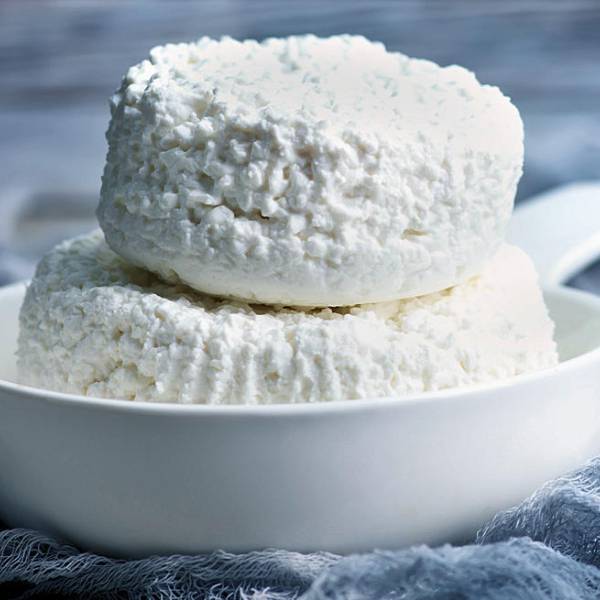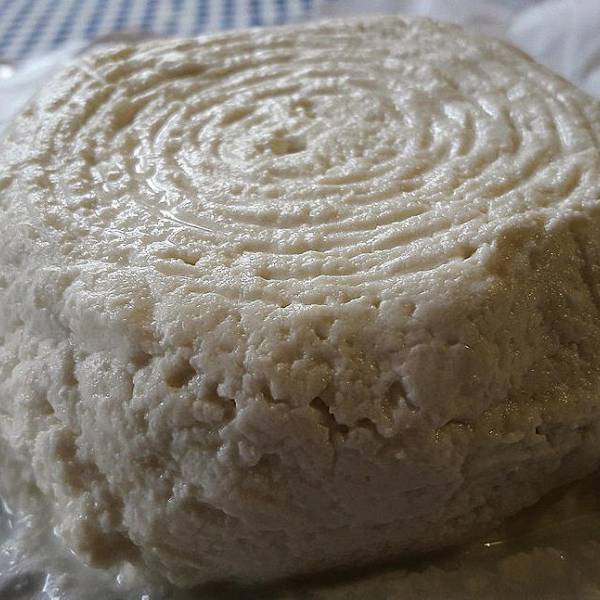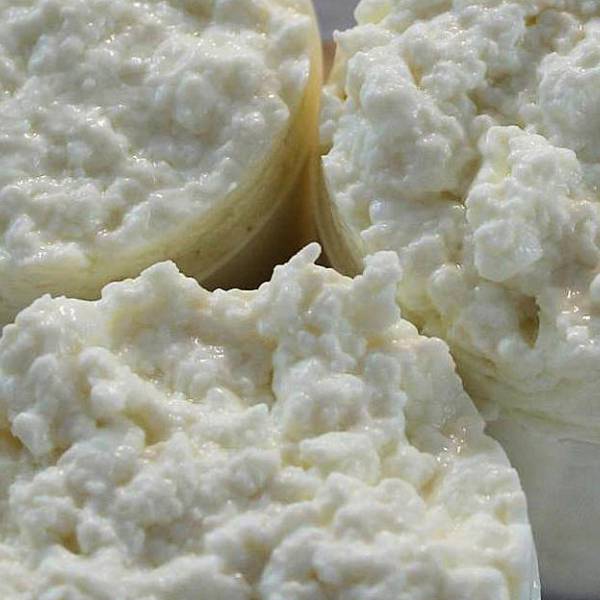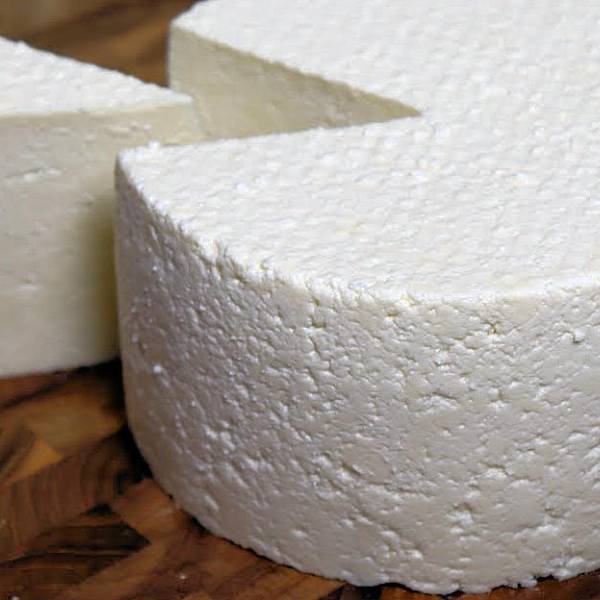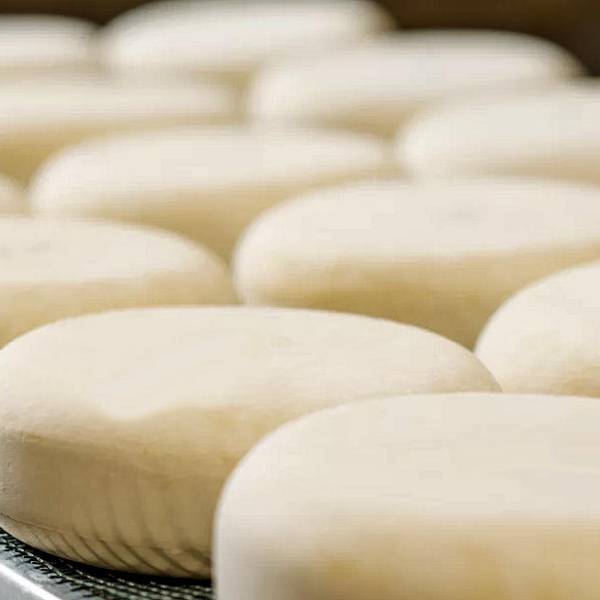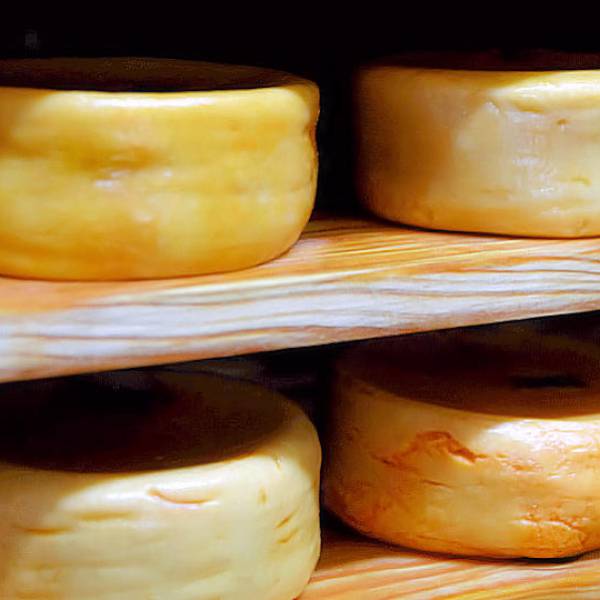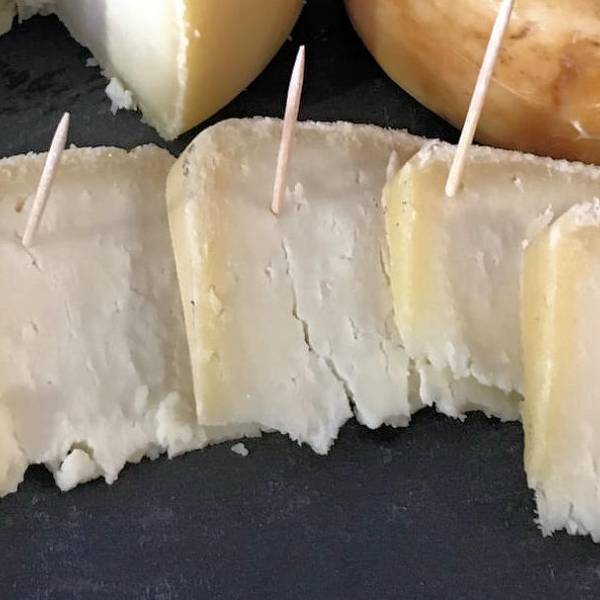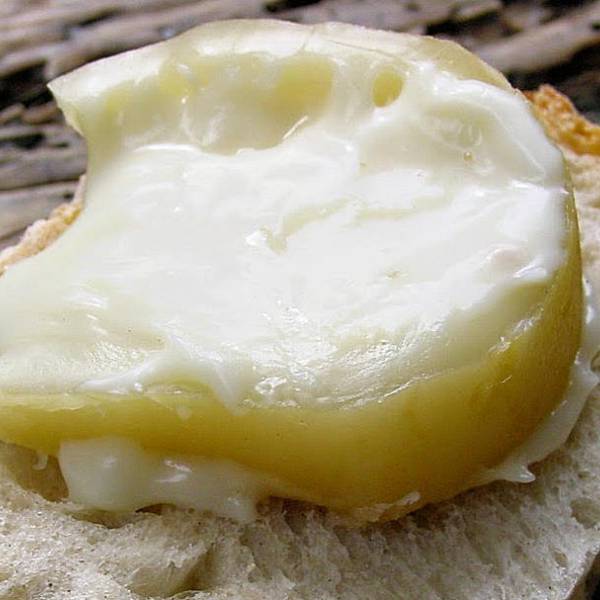Once the curd has achieved the desired consistency, it is placed in molds lined with cloth and pressed by hand. This step ensures that excess whey is removed, and the cheese takes on its distinctive shape - a flattened cone that stands as a symbol of tradition. Throughout the pressing process, the molds are turned multiple times to ensure even drainage and shape.
To add flavor and preserve the cheese, it is then salted either by rubbing coarse salt on the surface or by immersing it in brine for a few hours. This step contributes to the development of the cheese's characteristic taste and texture. After salting, the cheese is taken to cool and humid cellars, where it ages for a minimum of 40 days for goat's milk cheese and 50 days for sheep's milk cheese.
During the aging process, Queijo de Castelo Branco undergoes a transformation. Its creamy and uniform paste gradually develops small holes, and the flavor intensifies, ranging from mild to strong depending on the age of the cheese. As the cheese matures, it also develops a thin, smooth, and yellowish rind, sometimes bearing the imprint of the cloth used in the draining process. This natural rind acts as a protective shield, preserving the cheese's quality and ensuring a delightful tasting experience.
Queijo de Castelo Branco's significance extends beyond its production process and unique characteristics. This cheese holds the prestigious Protected Designation of Origin (PDO) status, a testament to its authenticity and adherence to strict regulations. The PDO designation recognizes the cheese as a product of the specific geographic area surrounding Castelo Branco, ensuring that it is produced with the utmost care and following established quality standards.
Lisbon.vip Recommends
The cheese played a significant role in local markets and fairs, where it was traded and sold, attracting visitors from near and far. One such renowned event was the Feira de São Mateus in Viseu, where Queijo de Castelo Branco would captivate the senses of all those who encountered it.
Beyond its economic importance, the cheese also held a place in religious rituals and festive celebrations. It was customary to offer Queijo de Castelo Branco as a gift to priests, godparents, or relatives, a gesture that reflected gratitude and friendship. During Easter and Christmas, the cheese adorned tables, symbolizing hospitality and generosity.
Today, Queijo de Castelo Branco continues to be cherished as a culinary treasure, appreciated by both locals and visitors to the Beira Baixa region. Its creamy texture, slightly acidic taste, and nuanced flavors make it a delight to savor on its own. It pairs exceptionally well with crusty bread, honey, jams, or fruits, creating a symphony of flavors on the palate. Moreover, the cheese's versatility allows it to be used in various dishes, adding a touch of richness to soups, salads, pies, or desserts.
Queijo de Castelo Branco is not merely a cheese; it represents a remarkable narrative of tradition, innovation, and passion that has endured for centuries. Each bite tells the story of the people, the land, and the cultural heritage that shaped its creation. Whether enjoyed in the Beira Baixa region or savored in far-flung corners of the world, Queijo de Castelo Branco invites all to embark on a sensory journey, where the taste of history and tradition can be relished with every delicious bite.




